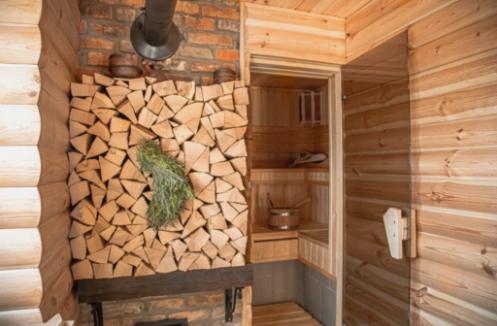Maintenance Tips for Wood-Burning Sauna Owners
22 February 2025 by Moshe B.As a wood-burning sauna owner, it is important to keep up with regular maintenance to ensure the efficiency and longevity of your sauna. From seasonal wood selection and storage tips to preventing mold and mildew, proper airflow and ventilation, as well as regular inspections of the structure, a well-maintained sauna will not only provide a relaxing experience but also help prevent potential issues down the line. Here are some key maintenance tips to keep your wood-burning sauna in top condition.

Seasonal Wood Selection and Storage Tips for Efficient Heating
When it comes to owning a wood-burning sauna, selecting the right type of wood and storing it properly is crucial for efficient heating. Different types of wood burn at different rates and produce varying levels of heat, so choosing the right wood for your sauna is important to ensure that it reaches optimal temperatures for a satisfying sauna experience. One popular option for sauna owners is to use softwoods such as cedar or spruce, as they tend to burn quickly and produce a pleasant aroma that enhances the sauna experience. Hardwoods like oak or birch, on the other hand, burn slower and produce a hotter, more intense heat. Ultimately, the type of wood you choose will depend on your personal preference and how you like your sauna to feel. In terms of wood storage, it's important to keep your firewood dry and well-ventilated to ensure that it burns efficiently. Moisture in the wood can prevent it from burning properly and can also lead to a build-up of creosote in your chimney, which can be a fire hazard. Stacking your firewood off the ground on a raised platform and covering it with a tarp or storing it in a shed can help protect it from the elements and keep it dry. By selecting the right type of wood and storing it properly, you can ensure that your wood-burning sauna operates efficiently and effectively, providing you with a relaxing and enjoyable sauna experience every time you use it.Preventing Mold and Mildew in a Wood-Burning Sauna
One of the key ways to prevent mold and mildew in your sauna is to ensure that the space is properly ventilated. This means having adequate airflow throughout the sauna, as well as utilizing a ventilation system to help control moisture levels. Additionally, it is important to regularly clean and dry the sauna after each use. Wipe down the walls, benches, and floors to remove any excess moisture that could lead to mold growth. It is also a good idea to leave the sauna door open after each use to allow for proper air circulation and drying. Using a dehumidifier in the sauna can also help to control moisture levels and prevent mold and mildew growth. Make sure to empty the dehumidifier regularly and clean it as needed to ensure it is working effectively. Lastly, inspecting the sauna regularly for any signs of mold or mildew is crucial in preventing these issues from getting out of control. If you do notice any mold or mildew growth, be sure to clean it promptly with a solution specifically designed to remove mold and mildew. By following these tips and taking proactive measures to prevent mold and mildew in your wood-burning sauna, you can ensure a clean and healthy sauna environment for years to come.Maintaining Proper Airflow and Ventilation in Your Sauna
Proper airflow and ventilation are crucial aspects of maintaining a wood-burning sauna. Without adequate airflow, the sauna may become stuffy and uncomfortable, while poor ventilation can lead to a buildup of harmful fumes and potentially dangerous conditions. Here are some tips to help you maintain proper airflow and ventilation in your sauna:Ensure that your sauna has proper vents installed to allow for fresh air to enter and hot air to exit. These vents should be strategically placed to create a natural flow of air throughout the sauna.
Regularly clean and maintain your sauna’s ventilation system to prevent blockages and ensure that air can flow freely. This includes cleaning dust and debris from vents and fans, as well as checking for any signs of damage or wear.
Monitor the humidity levels in your sauna and adjust as needed. Excessive humidity can lead to condensation and mold growth, while too dry of an environment can be uncomfortable and drying to the skin.
Consider installing a temperature and humidity control system to help regulate airflow and create a more comfortable sauna experience. By following these tips and maintaining proper airflow and ventilation in your wood-burning sauna, you can ensure a safe and enjoyable sauna experience for years to come.